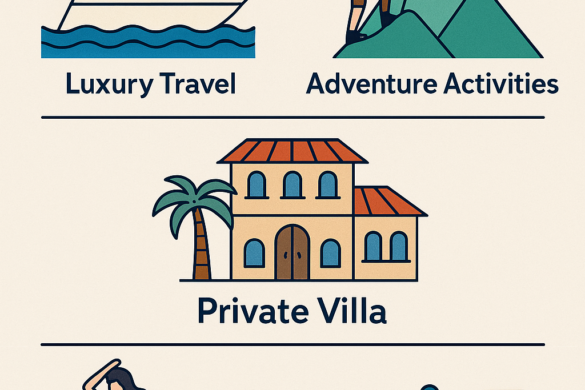Long Island Weight loss injections have become one of the most talked-about tools for shedding pounds, especially medications like semaglutide (Ozempic/Wegovy), tirzepatide (Mounjaro/Zepbound), and other GLP-1–based treatments. These weekly injections have helped many people finally break through plateaus and see real, sustainable results—but they also come with a lot of questions, especially: “How fast can I actually lose weight?”
If you’re considering weekly weight loss medication or you’ve just started them, here’s a realistic, clear-cut breakdown of what to expect week-by-week and month-by-month.
First, What Do Weight-Loss Injections Actually Do?
Most weekly injections work by:
- Slowing down digestion
- Helping you feel fuller longer
- Reducing appetite and cravings
- Improving blood sugar control
The combination of these effects helps you reduce your daily calorie intake without feeling deprived, which is the main driver behind the weight loss.
It’s important to know that the speed of your weight loss depends on several factors—your dose, your metabolism, your lifestyle, and your starting weight. Everyone’s journey looks different.
So… How Fast Can You Lose Weight?
The short answer: Most people lose anywhere from 1 to 2 pounds per week, but the rate often changes at different stages of the journey.
Here’s what’s realistic based on clinical studies and real patient experiences.

Weeks 1–4: Getting Used to the Medication
During the first month, your provider typically starts you at a low dose to reduce side effects like nausea or decreased appetite. Because of this:
Average weight loss:
2–6 pounds total during the first month.
Some people lose more if their appetite decreases quickly, while others see very minimal changes—and that’s completely normal. Most weight loss injections don’t hit full strength until dosage increases in the following months.
What you will likely notice in this early phase:
- Smaller portion sizes
- Feeling full faster
- Reduced snacking
- Less interest in sugary or high-calorie foods
Even if the scale doesn’t move dramatically at first, your habits usually start changing right away.
Months 2–3: The Momentum Phase
This is where things start to pick up. Most patients feel the biggest drop in appetite during this period, especially once they reach a therapeutic dose.
Average weight loss:
6–12 pounds per month
(around 1–3 pounds per week)
During this phase, you’ll likely experience:
- More noticeable drop in cravings
- More consistent calorie deficit
- Better control over emotional eating
- More frequent “non-scale victories” like looser clothing
This is typically when people start hearing, “Have you lost weight?”
Months 4–6: Noticeable Transformation
By this point, the medication has fully built up in your system, and your habits have likely improved. This is the stage where people often see the biggest visible changes.
Average weight loss:
15–30+ pounds total by Month 6
(Some lose even more depending on starting weight and consistency.)
However, it’s common for the pace to slow down slightly in this period—your body naturally adjusts as it loses weight. Even with injections, weight loss is rarely a straight line.
Months 6–12: Steady & Sustainable Progress
For many patients, this is where the medication shows its biggest benefit: maintaining a steady decline instead of regaining lost weight.
Average total weight loss at 1 year:
15–20% of your starting body weight
Here’s what that looks like visually:
- If you start at 180 lbs → you may lose 27–36 lbs
- If you start at 220 lbs → you may lose 33–44 lbs
- If you start at 260 lbs → you may lose 39–52 lbs
Some lose more, especially at higher doses or with tirzepatide-based injections, which tend to produce faster results than traditional GLP-1 medications.
Factors That Affect How Fast You Lose Weight
Everyone’s timeline looks a little different. Your results may be faster or slower depending on:
1. Your starting weight
People with a higher starting weight typically see faster early losses.
2. Your dose & medication type
Tirzepatide (Zepbound/Mounjaro) often results in faster weight loss than semaglutide, but both are highly effective.
3. Your eating habits
Even though injections lower your appetite, food choices still matter. High-protein meals and simple calorie awareness can accelerate progress.
4. Exercise (even light movement)
You don’t need intense workouts; walking alone can increase weekly results.
5. Consistency
Sticking to injections, following titration schedules, and attending follow-ups all help ensure steady progress.
What’s Not Realistic
There’s a lot of hype around these injections, so it’s important to have realistic expectations.
You will not lose 20 pounds in a month.
Even with medication, that type of rapid loss is unhealthy and unsustainable.
You may not lose weight every week.
Weight naturally fluctuates. Focus on monthly trends—not daily scale numbers.
You still need healthy habits.
The injections help tremendously, but they’re not magic. A balanced routine gives you the best, longest-lasting results.
The Most Important Thing: Focus on the Long Game
Weekly injections are designed for gradual, sustainable weight loss, not crash diets. Yes, you’ll likely see good progress early on, but the biggest benefits come over several months of consistent use.
Most people feel:
- More in control of food choices
- Less hungry overall
- More confident
- Happier with their relationship with food
Weight-loss injections don’t just help you lose weight, they help you build healthier patterns you can maintain long-term.












